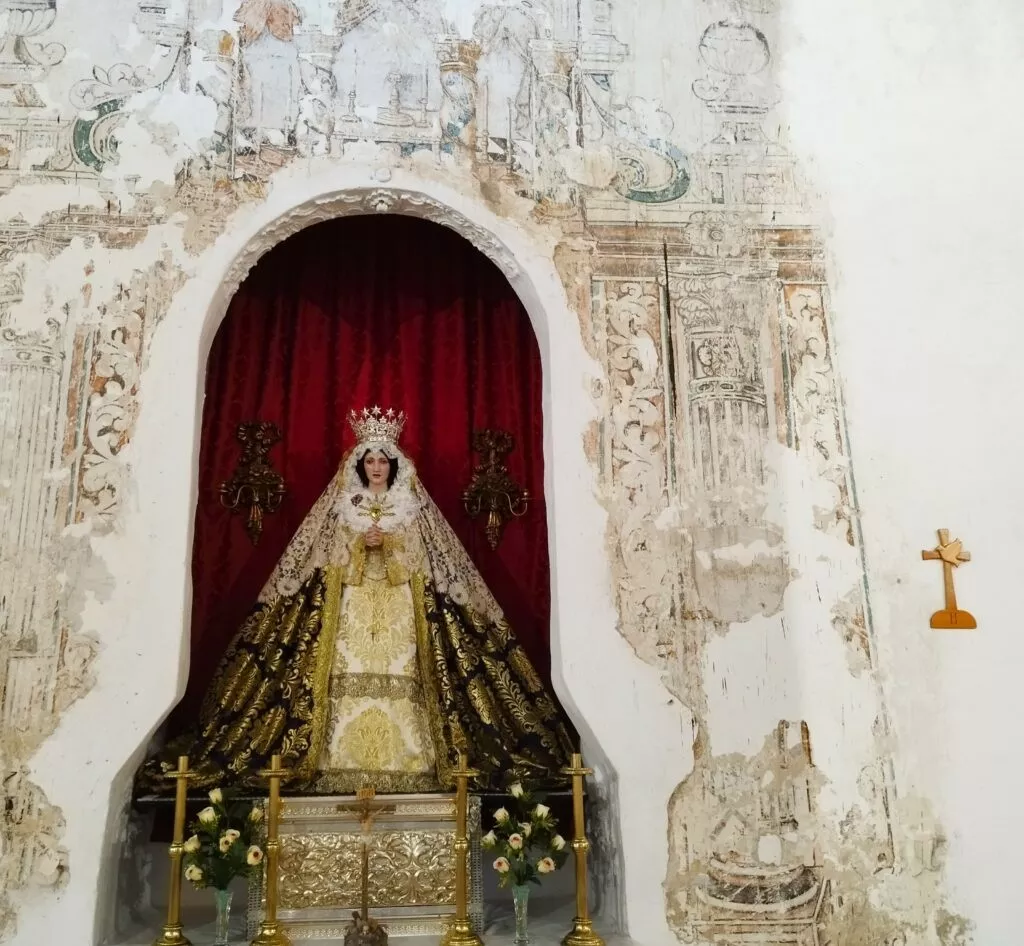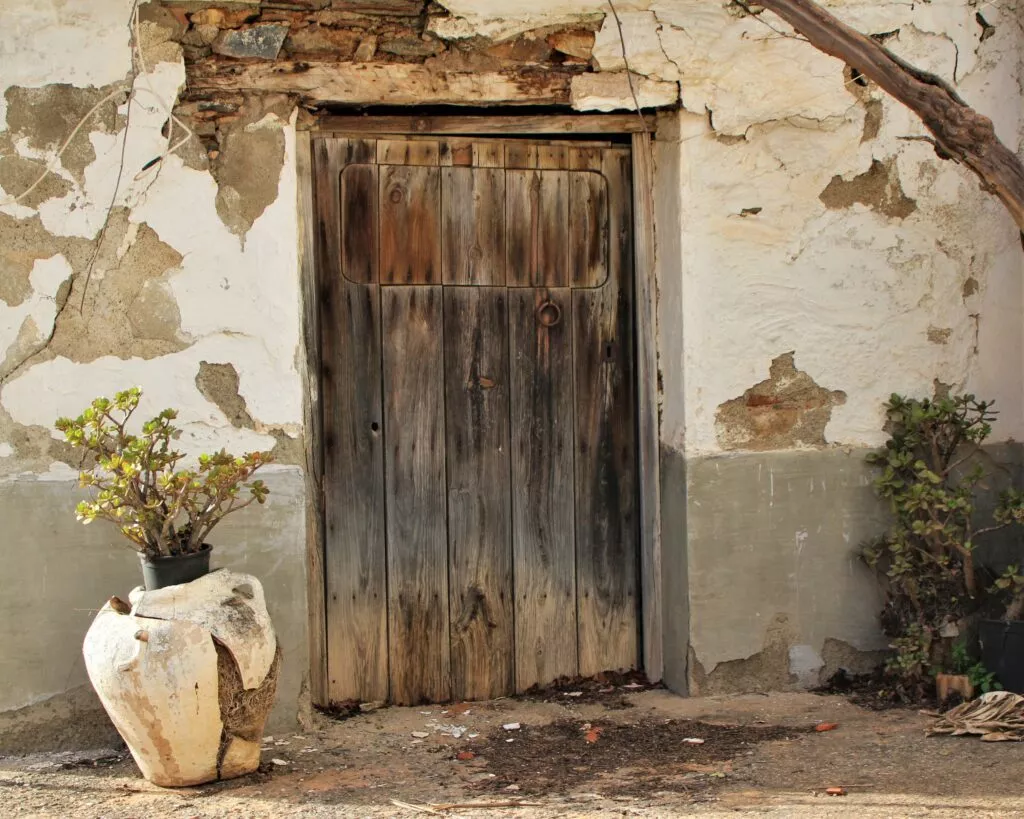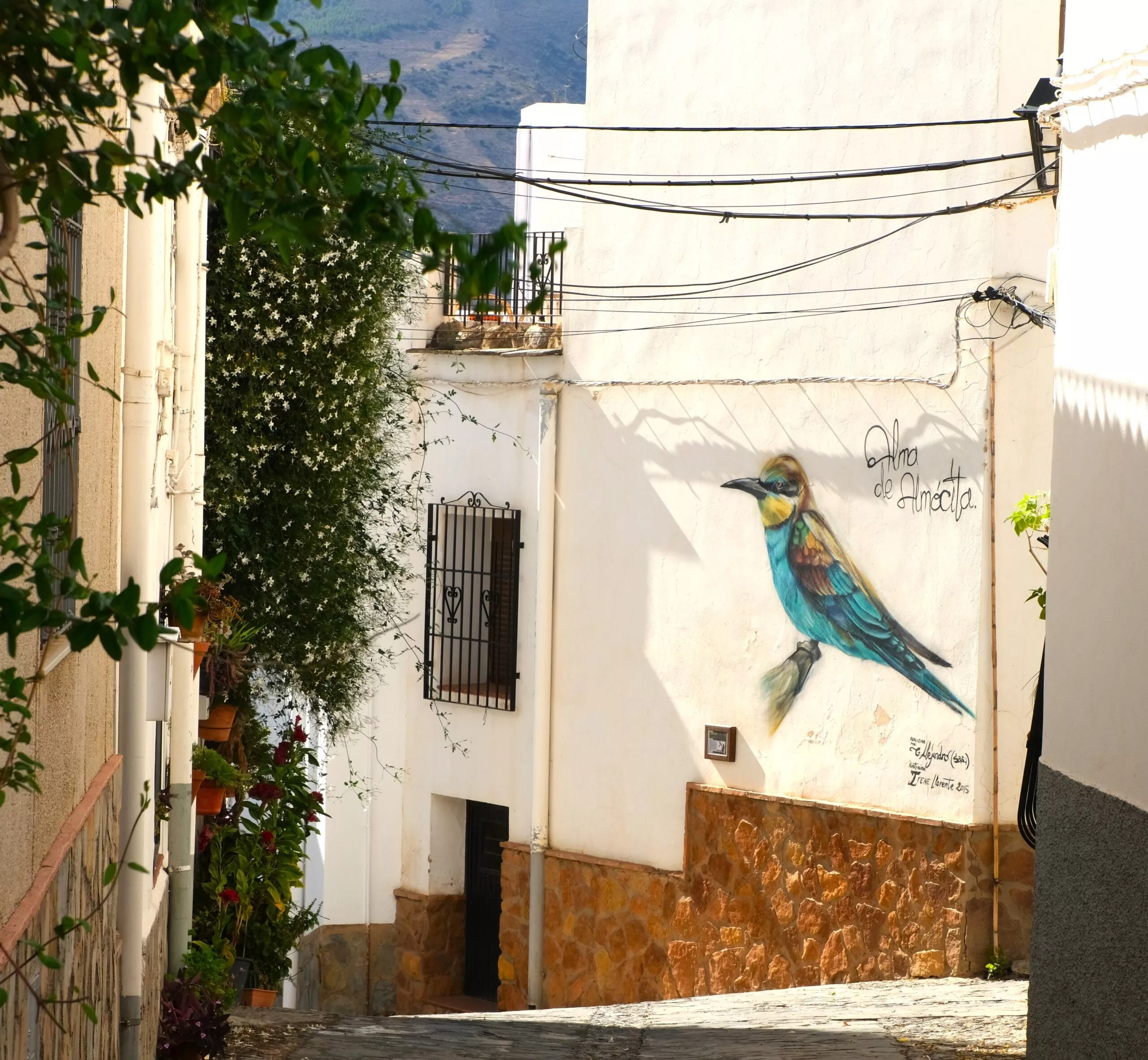Cutar best things to see and do
The paradise fountain
Visit Cutar, next to Comares en Axarquia, in the province of Málaga

In this article you will find the essential information to visit Cutar :
- A few words about Cutar
- The origins of the village
- Visiting Cutar, what to see?
- What to do in Cutar?
- activities
- idea for a guided tour
- the festivities
- Where is Cutar?
- Book accommodation
- Some useful links
- Experiences to discover in the province of Málaga
- Discover the village of Salto del Negro

A few words about Cutar
Cutar is located in Axarquia in the province of Malaga. This white village has preserved its authenticity.

Cutar is a village on the Ruta de la Pasa (Rasin Route). On this famous route there are also the villages of Comares, Almachar, Moclinejo, and El Borge.
The landscape around this village, surrounded by mountains, is very beautiful to see.

This village in Al-Andalus times had the nickname of Fountain of Paradise with its 12 springs.

Here, in the centre of the village, is one of the old water sources from this famous period:

The origin of the name Cutar
The name of the village is of Arabic origin and dates back to the 10th century. At that time there was a hamlet called “Hins Acut”, which in Arabic means “Sharp Castle”. This name refers to a fortress that no longer exists today.

Cutar, a village of monfis (Morisco rebels and bandits)
By way of introduction, Andalusia has been known for its bandits for thousands of years. Each village, according to the times, has sheltered bandits. Cicero, more than 2000 years ago, already spoke about them in his correspondence. We also have writings from the period of the Caliphate of Cordoba that bear witness to this.

Cutar is known to have been a village of monfis, Morisco bandits in the 16th century. Moriscos is the name given to Muslim converts who remained after the reconquest. A certain number of Muslims preferred to continue living in hiding: the monfis.

Here are a few definitions to help you find your way around the names of Al-Andalus and the post-reconquest period:
- the Mozarabes: these were the Hispanic people who under Al-Andalus were subject to Islamic law but who retained their Christian religion as well as their ecclesiastical and judicial organisation.
- Muladís: Christians who converted to Islam during the Arab domination of Spain and lived among the Muslims.

After the conquest of the territories by the Catholic kings :
- Mudéjars: Muslims who were dependent on Christian authority
- Moriscos: these were Muslims who converted to Christianity, initially willingly or out of interest, or by force when the law required them to leave or convert.
So the Monfís are Mudéjars who refused to become Moriscos and who, rather than leave, went underground. The village of Cútar is known to have been a haunt of Monfís, as is the Alpujarra region.
The word Monfí comes directly from the Arabic: منفي and means outcast.
What to see in Cutar?
Strolling through its narrow streets

The Arab fountain

It is located at the entrance to the village and is the only one in the province of Málaga that has retained its original appearance (see photo below).

The Monfi Museum in Cutar
This small museum is a treasure trove of information on the Al-Andalus period.

The village opened the Monfi Museum to tell the story of this period and to display a treasure found only a few years ago.

The museum contains what is known as the “Cutar Koran”, dating from the 13th century. It is one of the oldest Korans found in Spain to date. It is a small treasure from the Al-Andalus period, even older than the Monfis period.

Here is the incredible story of this Koran, now known as the ‘Koran of Cútar’:
On 9 May 1490 Muhammad Al-Khajjar, an erudite man with a knowledge of astrology, mathematics and poetry, is appointed judicial expert (Alfaquí) and imam of Aqūṭa, now Cútar.
1492: fall of the kingdom of Granada
Around 1500, he was forced to convert to Christianity or leave his country, opting for the latter. In the hope of returning, he hid 2 books he had written and this famous Koran, dating from the 12th-12th centuries, in a wall in his house.
500 years later…
In 2003, Magdalena Santiago, a resident of the village, decided to renovate her house. When they knocked down a wall, they found these 3 books. In addition to the Koran, the 2 books written by this alfaquí bear priceless witness to daily life in the village!

This museum is located in Calle Tinteros.
The church of the Virgen de la Encarnacion

The bell tower of the church is in fact the former minaret of the village mosque.

The church now houses the patron saint of the village, San Roque, as well as Nuestra Señora de los Ángeles.

Inside the church, you can see some old paintings on the walls:

Around Cutar
Around the village you can see many vineyards.

As well as paseros to dry the grapes. An ancestral culture to discover!

Taste the local culinary speciality
The speciality of the village is the puchero. It looks like a stew with chickpeas and chorizo.
What to do in Cutar?
Activities
In the surroundings, it is possible to find very nice activities:

- horse riding, on the beach or in the mountains
- diving in Nerja and Torrox
- guided tours (villages of Axarquia, Cordoba, Alhambra,…)
- via ferrata of Caminito del Rey
- hiking (El Saltillo with the hanging bridge,…)
- canyoning in the rio Verde
- astrotourism
- snorkeling
- visit of caves
Use the following link to access all the activities to do. during your holidays. This link provides you with all the details of each activity.
Ideas for guided tours of the area
A very good local guide, Cipriano, offers thematic and seasonal guided tours of the villages of Axarquia.

For example, Cipriano organises the visit of the Ruta de la Pasa (Raisin Route) from Nerja, Torrox and Torre del Mar. This visit is only possible 2 months of the year, in September and October. This raisin route is absolutely unique. A must-see!

The guided tours are always done in small groups (2 to 8 people max.) to discover the authentic Axarquia.
In the following link you will find all the details and prices of the tours he offers.
The themes of the tours are: the white villages of Axarquia, the wine route, the olive oil route, ….
Here are all the guided tours from Torrox, Nerja and Torre del Mar.
Fiestas

The Fiesta del Monfi is a beautiful festival. The villagers dress in period costume to commemorate the historical past of the village.
- Fiesta del Monfí, in October
- Fiesta de San Roque, in August
Worth seeing: the corridas de cintas (ribbon races). These races take place during the Fiesta de San Roque in August. They can be done on horseback, bicycle or motorbike depending on the village. A must-see!
Where is Cutar?
Book an accommodation
Indicate the desired dates to know the availability.
Some useful links (car hire, other ideas for visits)
Easy and economical bookings
If you are in Andalucia as part of a tour with several major cities to visit, here are some links that may be of interest:
Seville
Seville, the capital of Andalucia, is a city full of treasures to discover and monuments to visit.

Here you will find everything you can see in Seville in 3 days. And for those who will stay longer you will also find information on secret Seville and the Santa Cruz and Triana districts.
Cadiz

Visit Cadiz, a city with an incredible past and great beauty, on the Costa del la Luz.
Malaga
When you reach the Costa del Sol you will find in this link all must-sees in Malaga :

Granada
Discover what to see in Granada, and visit the Albaicin and Sacromonte districts:

Cordoba
And of course, visit Cordoba, the caliphate city, and the Juderia district

Experiences to discover in the province of Malaga
If you’re in the area for a few days, here’s a selection of great things to do:
Find more ideas for visits to authentic Andalucia: see the blog pages on Andalucia.
Here is the link to receive our newsletter from the andaluciamia.com blog
Discover the village of Salto del Negro

This village is attached to the municipality of Cutar.

This is a small village, a little lost, set at the bottom of several mountains. There are two Salto del Negro in Spain. The other village is in the Canary Islands.
This village confirms that Axarquia is truly a land of legends and…legends.
There are many legends surrounding the origin of the name of this village.
Here they are accompanied by photos of the village, which is known for its fruit production and its bakery:

- during the reconquest of Comares, a village located on the top of a mountain, perched on cliffs, it is said that Ferdinand’s troops pushed the Moors to the edge of the cliff until they fell and ended up at the place that bears this name.

- Long after the reconquest, a law was passed forcing the Christianisation of the Muslims. The latter, in Comares, would have preferred to jump off the cliff rather than convert.

- It is said that the lord of Canillas de Aceituno owned slaves of Moorish origin, one of whom had very dark skin. The latter escaped and jumped into a ravine to escape his pursuers. The Salto del Negro would have been called the Tajo (ravine) del Negro previously.

- There would have been a time when it was customary to have black slaves since they were close to Africa. As for the previous legend, one of these slaves would have run away and unintentionally fell into a ravine near the village.

… I think that if we ask more people, we will find other legends to explain the name of this place….
The historical version (although it is not certain): a man of Moorish origin called Pedro Moreno, known as El Negro, owned the land where the present village is located. It was customary to give the name or nickname of the owner of the place.

The bakery in Salto del Negro: Panaderia Beatriz

This bakery uses an oven that works only with wood fire

Pastries like tortas are to be discovered. In my opinion, there is no more authentic and ancient recipe in the region. A little delight!

The best time to visit the village is probably in March and April when the citrus fruits are in bloom. When there is a bit of wind, there is a scent of azahar flowers in the streets of the village. It’s a pleasure.
Finally, as you leave the village in the direction of Benamargosa, you can see the old San Rafael flour mill, which was once a mill used to produce olive oil, and was itself an old sugar cane factory. The chimney from this period can still be seen.
The latest articles on Andalucia
-
Interactive map of Andalucia with best places to see

An interactive map of Andalucia to discover the sites to see around your holiday destination or to prepare a tour or road-trip.
-
What to see in Almocita in the Alpujarra almeriense

What to see in Almocita : Find the essential things to see in this Alpujarra village, which is full of poetry and tranquillity.
-
Castellar de la Frontera a unique white village in Andalucia

Here’s a unique place to see, the village of castellar de la Frontera is located inside a fortress. It is also a place of great beauty.
-
Isleta del Moro, an authentic little paradise in Andalucia

Here’s everything you need to see and do to discover this little paradise that is isleta del Moro, in the Cabo de Gata park.

